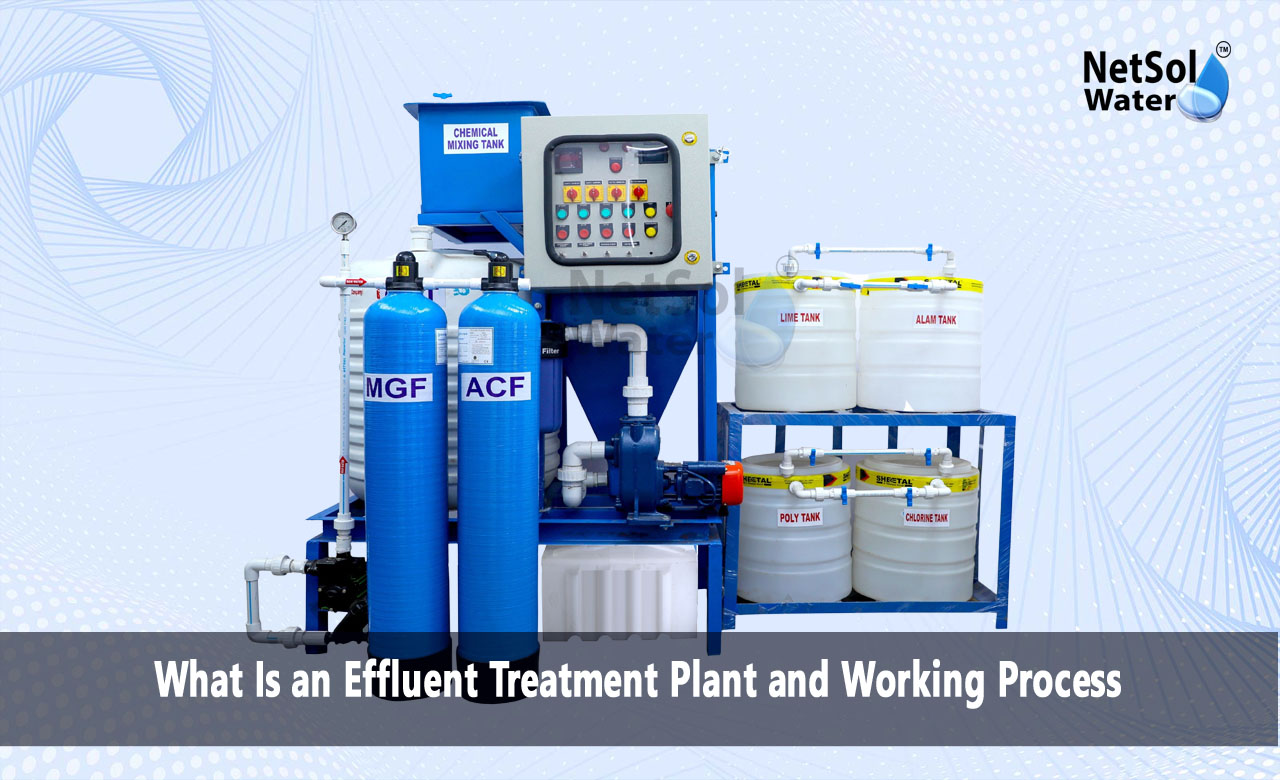What Is an Effluent Treatment Plant(ETP) and Working Process?
An Effluent Treatment Plant (ETP) serves industries and communities by cleaning used water before it returns to nature. This system prevents pollution and protects water resources. It guides firms to meet rules on wastewater treatment. An Effluent Treatment Plant (ETP) removes harmful materials and makes water safe. It supports health and the environment. Many companies face legal and social demands on water discharge. They must treat water to meet quality standards. An Effluent Treatment Plant (ETP) stands at the center of this effort.
What Is an Effluent Treatment Plant (ETP)?
Effluent Treatment Plant (ETP) protect rivers, lakes and groundwater. They help firms work within legal limits on water discharge. Let us have a look on some key aspects of an ETP design and function.
An Effluent Treatment Plant (ETP) refers to a set of tanks, channels and filters that clean water. The plant removes solids, chemicals and harmful solids particles. It turns used water into a safe resource. Plants serve sectors like textiles, tannery and chemicals. They guard public health and ecology.
Key Components
An Effluent Treatment Plant (ETP) uses screens, chambers and biological reactors. Each part works on a step in the cleaning process. Screens catch large debris. Sediment chambers allow solids to settle. Reactors house bacteria that eat dissolved pollutants. Filters polish the water before discharge.
Types of ETP Systems
Various ETP types meet distinct demands. Physical, chemical plants mix air and chemicals to remove colour and odour. Bio reactors rely on microbes and aerobic action. Advanced units add steps like ultrafiltration or reverse osmosis. Selection depends on wastewater quality and local rules.
Working Process of an Effluent Treatment Plant (ETP)
Knowing why this process matters helps to follow the stages that transform dirty water into a safe discharge. A clear view of each stage shows how an Effluent Treatment Plant (ETP) protects health and environment. Let us have a look on some stages in an ETP process.
Primary Treatment Stage
This first step takes out solids that float or sink. The plant slows water flow in large tanks. Solids drop to the bottom as sludge. Oils and grease rise to the top and float off. Operators then remove these materials for safe disposal.
Secondary Treatment Stage
Next the plant relies on bacteria and oxygen to break down organic matter. Air pumps force oxygen into reactors. Microbes feed on waste and convert it into harmless by products. This step cuts biological load and improves water clarity.
Tertiary Treatment Stage
This final phase polishes water through filters, membranes or UV exposure. It removes metals and pathogens that remain after biological action. Some plants add chemicals to kill bacteria. The result meets standards for safe release into rivers or reuse.
Compliance Basics for an Effluent Treatment Plant (ETP)
Firms must follow rules to protect water bodies and human health. A clear knowledge of compliance basics drives proper plant design and operation. Let us have a look on some compliance essentials.
Regulatory Standards
Agencies set limits on pollutant levels in treated water. These rules cover parameters such as pH, chemical oxygen demand and metal content. Firms must test their discharge often. They must hold records that show they meet each standard.
Monitoring and Reporting
An Effluent Treatment Plant (ETP) must log key data each day. Operators measure flow rates, clarity and pollutant levels. They send reports to authorities on time. These reports prove compliance and avoid penalties.
Best Practices for Compliance
Good maintenance and staff training keep the plant working well. Regular checks of pumps, reactors and filters catch issues early. Firms may add alarms and backup units. They also review test results and fix any brewing problems fast.
Conclusion:
In the modern world water care stands as a shared goal. Efficient systems from design to operation drive that effort. An Effluent Treatment Plant (ETP) offers a proven way to meet rules and protect environment. Companies gain trust by showing they treat water right. They contribute to a healthier planet and community.
If you seek deeper insight into how an Effluent Treatment Plant (ETP) can serve your site or if you want help with design compliance or operation reach out now for a consultation. Let experts guide your path to clean water success.
Contact Netsol Water at:
Phone: +91-9650608473, Email: enquiry@netsolwater.com



